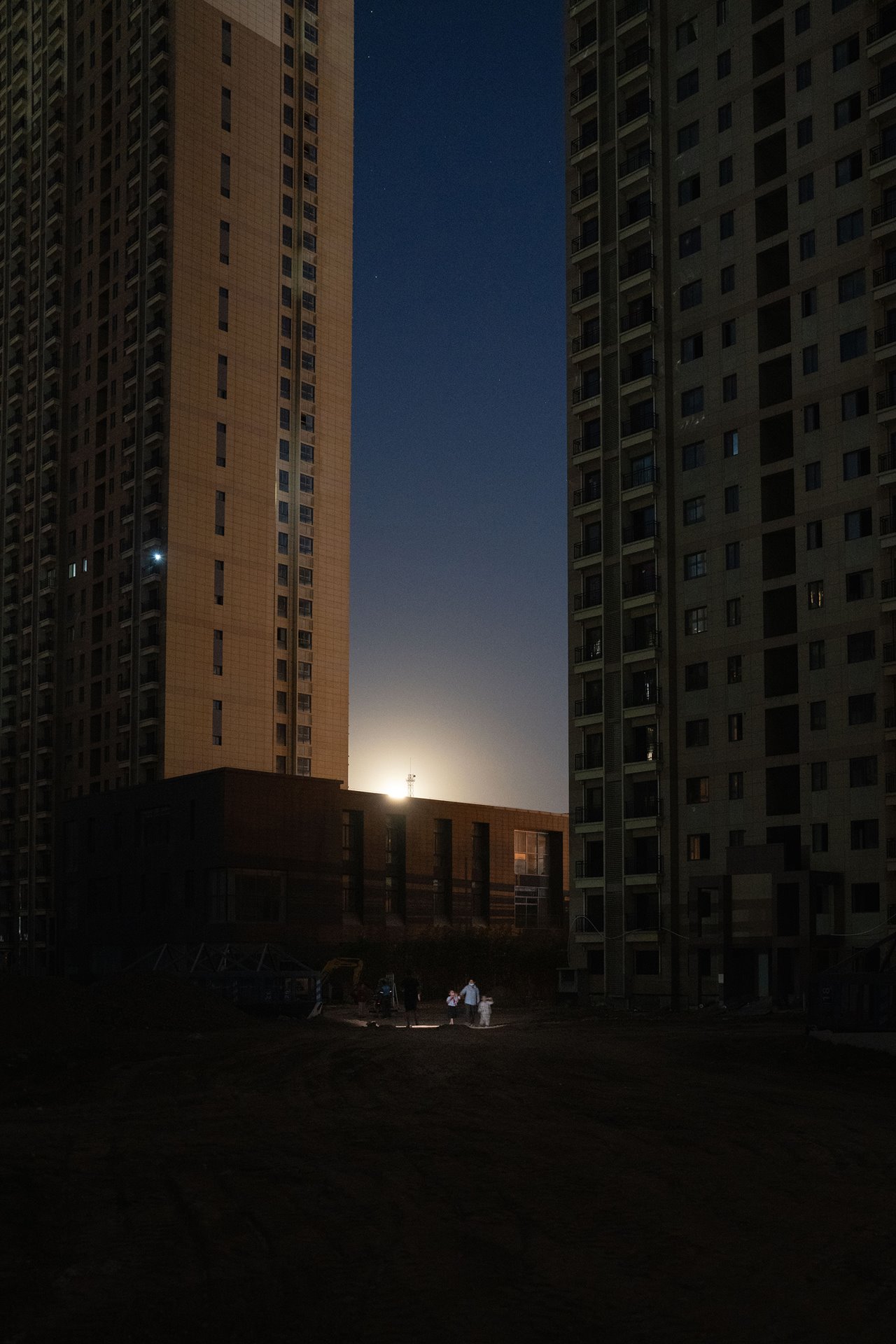Two families greet each other by flashlight at moonrise in the Yihefang apartment complex in Xi’an, China. Without electricity, residents make do with flashlights, solar powered lights, and an elevated sense of unity and community spirit.
These simple, quiet images tell a complex story of the suffering that the Chinese real estate market crisis has caused for ordinary people.
Chinese households invest up to 70 percent of their wealth into real estate. High demand for home ownership coupled with rapid economic development has created a decade-long boom in residential property construction and financing. Between 2010 and 2019, China’s building boom contributed as much as one third of the nation’s gross domestic product. A presale system in which buyers pay for their apartments months or years before they are finished enabled developers to finance massive amounts of new construction. However, the debt crisis made it difficult for housing developers to service their debt and finish projects still in construction.
Although they ended up owning homes that may never be completed, with no electricity or running water, home buyers still need to repay their mortgages. The COVID-19 pandemic that left many unable to work only compounded their financial difficulties. While much has been made of the financing crisis and its effects on the global economy, relatively little is known about the individuals affected.

